Seasonality, salinity and stocking density are key parameters
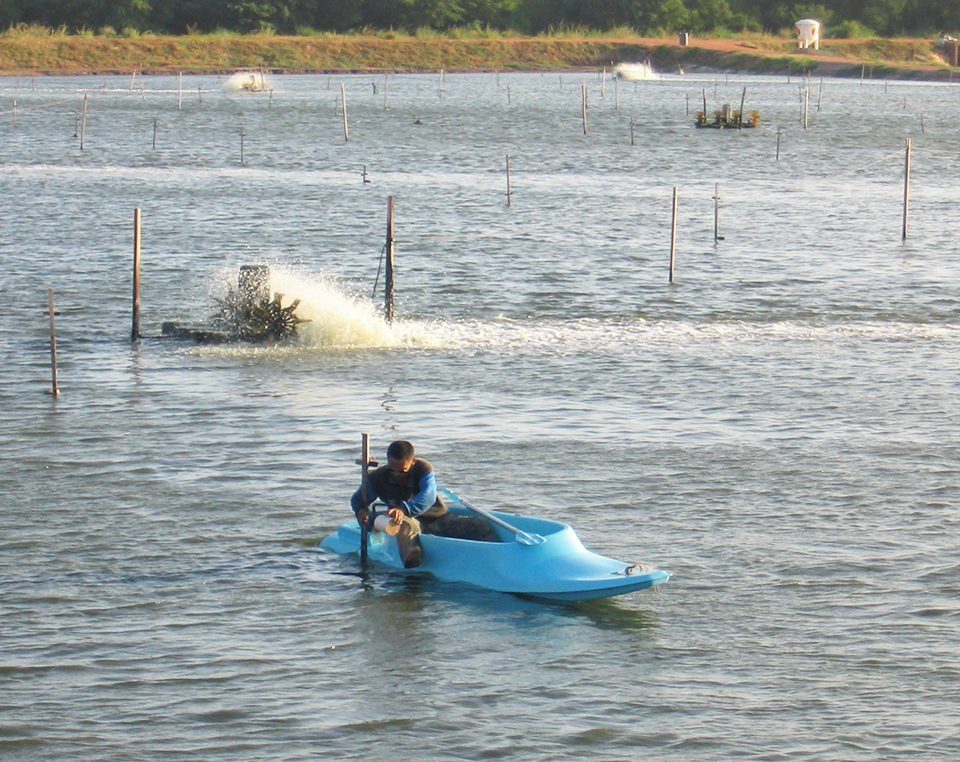
It is rather extraordinary to find data that relate environmental and culture practices to disease outbreaks for a wide geographic area. One of these rare occasions has been made possible by Aquatec, a leading commercial shrimp hatchery in Brazil.
As Aquatec representatives provide post-sales assistance through the growout phases to customers on Brazil’s northeastern coast, they collect information on stocking density, salinity and other water quality parameters, disease outbreaks, feed consumption and harvest yields. The authors analyzed information for 2,768 commercial shrimp grow-out cycles collected over two years.
Data analysis
Disease incidence data were subjected to mixed linear model analyses, including covariates and fixed effects for stocking density, average salinity, rough level of management, grow-out days, geographic region, season and random effects of farm and commercial feed utilized. The effects of the level of management, season, stocking density and average salinity level on the incidence of disease were found highly significant.
Disease reporting was mainly limited to infectious myonecrosis (IMN), necrotizing hepatopancreatitis (NHP) and vibriosis with a single report of infectious hypodermal and hematopoietic necrosis (IHHN). IMN and IHHN are of viral etiology, and the two other diseases are of bacterial etiology. For the field data collected in 2008 and 2009, 10.2 percent of the growouts tracked experienced IMN outbreaks, 2.5 percent reported NHP and 2.0 percent reported vibriosis outbreaks.
Management
Level of management was a crude way of accounting for the differences in management skills or inputs among growout operations. These were divided into two categories: those with good management and no apparent problems, and those with inadequate management, be it poor water quality, problems in bottom soil condition, predators or biomass competitors, aeration problems, low oxygen or algae problems.
Even in this crude manner, this effect was highly significant and with clear and meaningful biological impacts on all relevant traits studied, including IMN incidence levels. Grow-out facilities with management problems had, on average, an 8.6 percent higher incidence of IMN outbreaks than those with good management.
Seasonality
The northeastern coast of Brazil has four seasons. Summer, which lasts from December through March harvests, is hot and usually dry. Temperatures in March, April and May can still be high, but usually come in conjunction with rains. Winter – June through September – is cool and rainy. The September to November period typically has mild temperatures and mostly dry conditions.
The hot and dry summer season had lower reports of disease outbreaks, while the cool, rainy winter showed higher risk for bacterial diseases. IMN was reported in April, May, June and winter months, and slightly higher in October, November and December (Fig. 1).
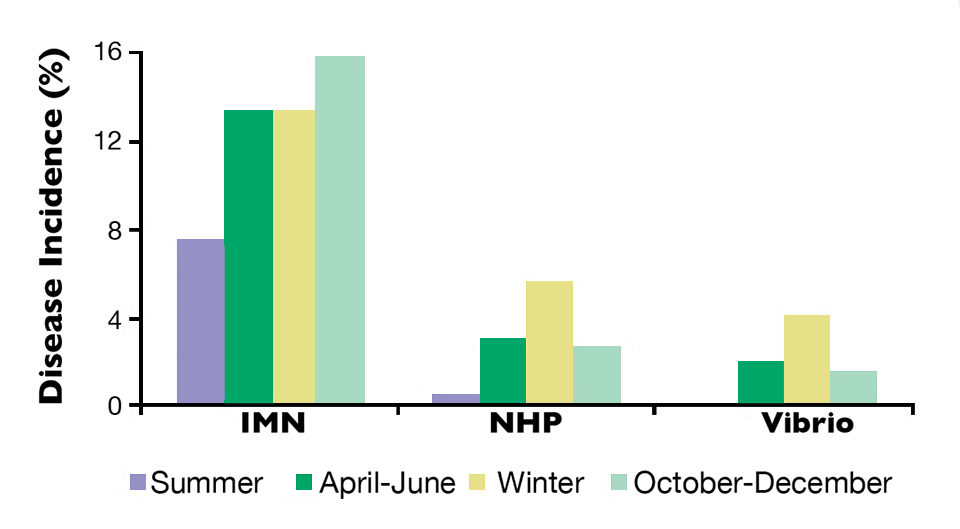
Salinity
Salinity also had a clear impact in the pattern of disease outbreaks. Reports of IMN in facilities with salinities below 10 ppt were clearly less frequent than for higher salinities.
Considering that viruses are obligatory intracellular parasites, a possible vector found less in low-salinity water may be involved in the disease transmission. Or IMN outbreaks may be triggered by bacterial problems in some cases.
In addition, low salinity was a favorable environment to minimize outbreaks of bacterial diseases. This supports previous observations where bacterial diseases were more often reported in high-salinity waters (Fig. 2).
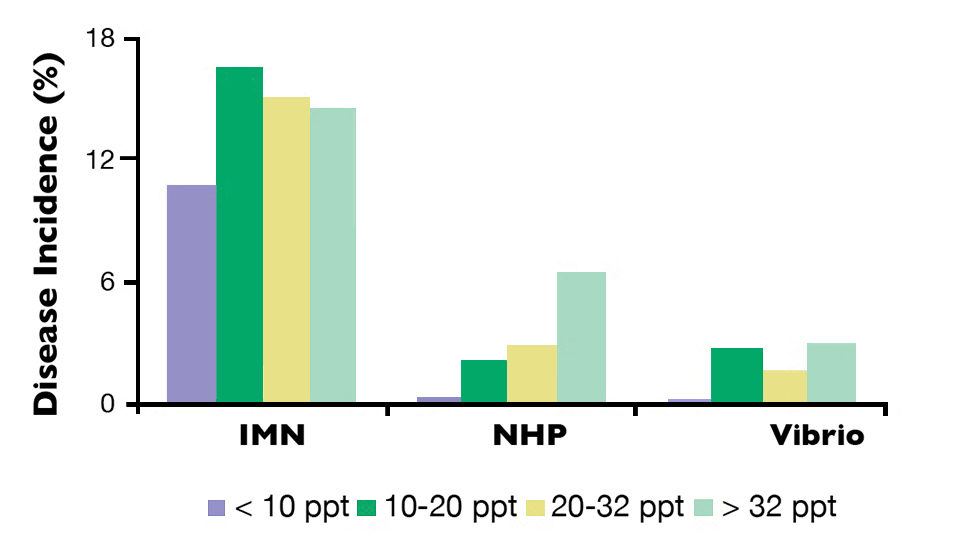
Stocking density
The impacts of stocking density on outbreaks of IMN and NHP were also significant, while it did not seem to have an effect on vibrio outbreaks. The highest risk of disease outbreaks for both diseases was at a stocking density of 30 to 50 shrimp per square meter, while the risk dropped at lower and higher densities (Fig. 3).
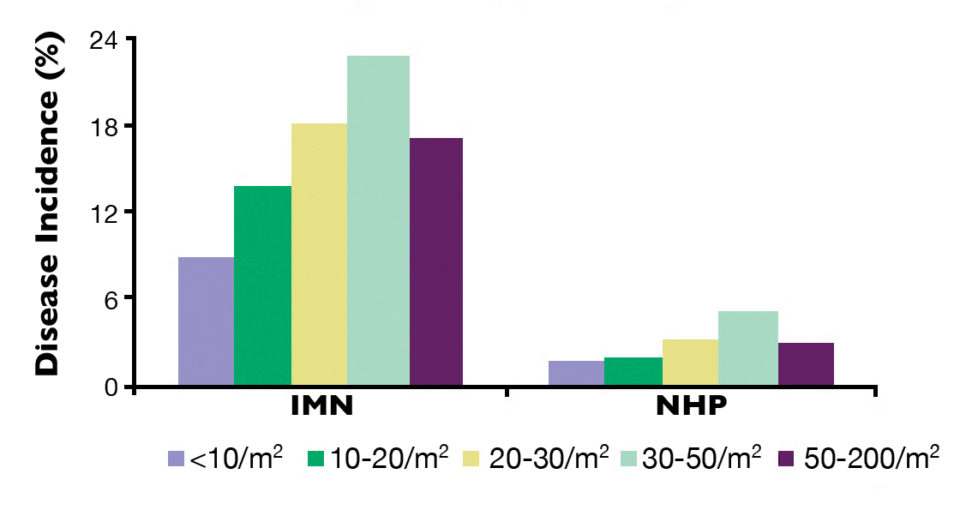
It is likely that the more heterotrophic management system of “super-intensive” farms is a cause. There are different reasons why biofloc environments are fairly stable with reduced disease risks. The water can be treated beforehand and the water exchange is much reduced. Also, when the density of a bacterial population is much higher than in normal pond culture, this can affect the bacterial release of polymers that trap viral particles and thus reduce the risk of disease transmission.
Finally, the type of postlarvae stocking – direct versus the use of nurseries – had an important impact on the incidence of NHP (Fig. 4). Nurseries presented a highly significant risk that might be related to the high densities achieved in the nurseries combined with higher susceptibility to infection at that stage of development.
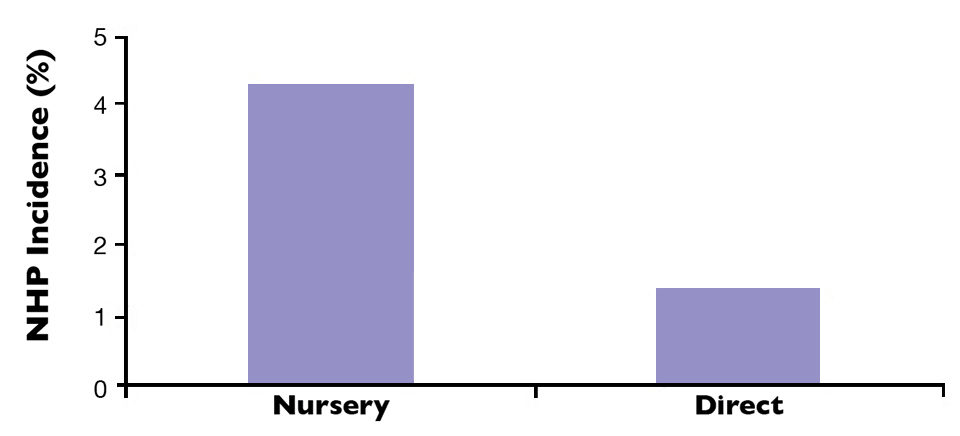
(Editor’s Note: This article was originally published in the May/June 2010 print edition of the Global Aquaculture Advocate.)
Authors
-
Victoria Alday-Sanz, Ph.D.
Gran Via 658, 4-1 08010
Barcelona, Spain[109,111,99,46,111,111,104,97,121,64,121,97,100,108,97,95,97,105,114,111,116,99,105,118]
-
Ana C. Guerrelhas, B.S.
Aquatec Industrial Pecuária
Barra do Cunhaú
Rio Grande do Norte, Brazil -
João L. Rocha, Ph.D.
Aquatec Industrial Pecuária
Barra do Cunhaú
Rio Grande do Norte, Brazil
Tagged With
Related Posts
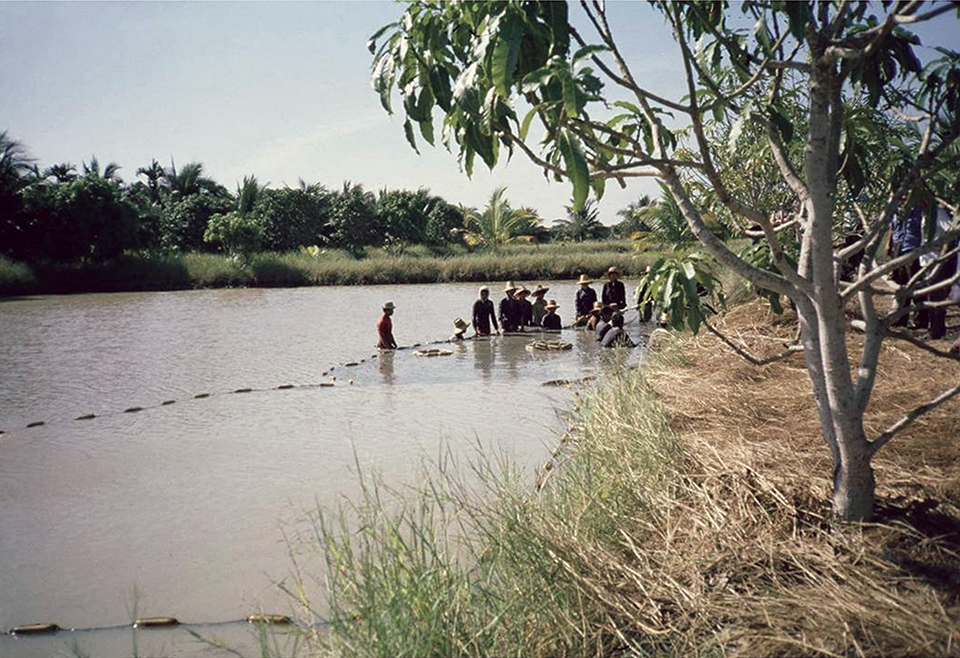
Health & Welfare
‘Big picture’ connects shrimp disease, inbreeding
Disease problems on shrimp farms may be partly driven by an interaction between management practices that cause inbreeding in small hatcheries and the amplification by inbreeding of susceptibility to disease and environmental stresses.

Health & Welfare
10 paths to low productivity and profitability with tilapia in sub-Saharan Africa
Tilapia culture in sub-Saharan Africa suffers from low productivity and profitability. A comprehensive management approach is needed to address the root causes.

Health & Welfare
A comprehensive look at the Proficiency Test for farmed shrimp
The University of Arizona Aquaculture Pathology Laboratory has carried out the Proficiency Test (PT) since 2005, with 300-plus diagnostic laboratories participating while improving their capabilities in the diagnosis of several shrimp pathogens.

Health & Welfare
A holistic management approach to EMS
Early Mortality Syndrome has devastated farmed shrimp in Asia and Latin America. With better understanding of the pathogen and the development and improvement of novel strategies, shrimp farmers are now able to better manage the disease.


